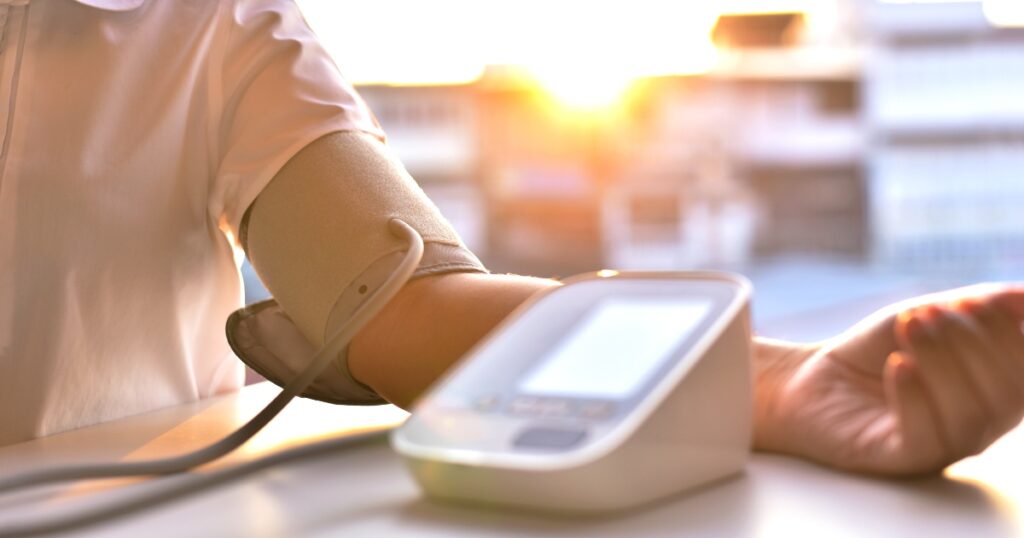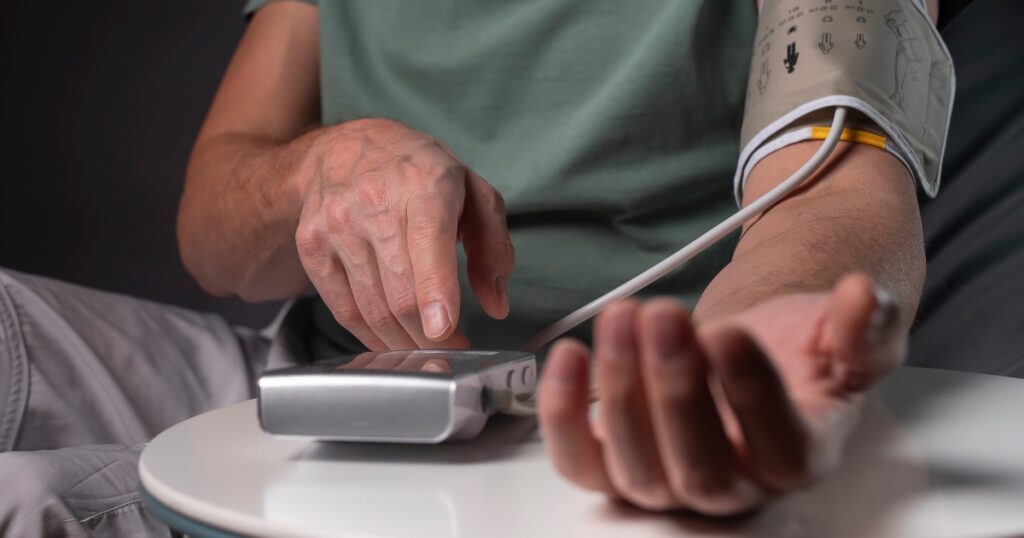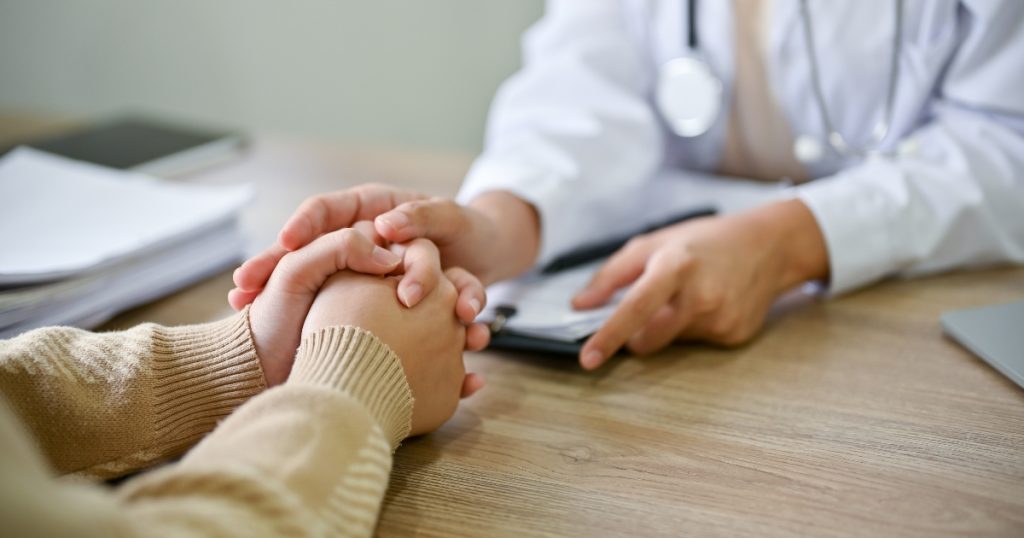Finding the Best Time to Take Blood Pressure: The Ultimate Guide
Similar to many substances in your body and other vitals, your blood pressure changes depending on the time of day. These changes tend not to be too drastic, but it still begs the question, when is the best time of the day for you to measure your blood pressure?
There’s a lot to know in this regard, so this article will focus on when you should take your blood pressure reading each day, the factors that can impact your BP, as well as tips for correct usage.

Master your heart health now
Take part in our 60sec quiz and get a heart health plan tailored just for you.
Contents
What’s the Best Time to Measure Blood Pressure?
Depending on your lifestyle, taking your blood pressure reading in the morning or evening may give you results that are quite different. Let’s talk about both in more detail.
Start managing your heart health now!
Find out what works for you with this 60sec quiz.

Considerations for morning blood pressure readings

If you have high blood pressure, one of the best reasons to take your measurements in the morning is because high morning blood pressure readings can make it more likely to suffer from a stroke. This is because blood pressure tends to peak in the morning.
Knowing your morning blood pressure can help you and your health care professional make the right choices for management. However, you should avoid taking your blood pressure reading for at least 30 minutes after waking up and doing any of the following:
- Drinking caffeine: Many people include coffee in their morning ritual, but it can cause an acute rise in BP.
- Exercising: Exercise can be used to manage high blood pressure when consistent, but it leads to slightly elevated blood pressure in the very short term.
- Eating breakfast: Food can lead to an acute increase in blood pressure, though it returns to normal levels within 90 minutes.
The morning is a good time to measure your blood pressure at home as it is a good predictor of the complications of elevated blood pressure. Just try to take your blood pressure readings at the same time everyday.
Benefits of evening blood pressure readings

People who have blood pressure measurements that are higher at night than in the morning are known as “reverse-dippers.” The time your blood pressure is naturally the highest has the most risk, so checking BP in the evening is best for them.
However, it might be a good idea for many other people to check their blood pressure in the evening as this is when they come back from work feeling the most stressed, and their blood pressure reading might be rather elevated at this point.
However, taking time after work to relax and lie down can have a positive effect on your blood pressure.
For reverse-dippers, the evening can be a good time to measure your blood pressure, but this doesn’t apply to most people.
Consistency is key
For most people, having your blood pressure measured in the morning is the better choice, as long as it isn’t right as you wake up and it is before you eat, have your coffee, or do your morning exercise.
Whether you choose the morning or the evening, it is important that you stick to the same time every day. This makes it easier for you to know when something is wrong because most factors at that same time of day are consistent.
Recommendations for Blood Pressure Monitoring at Home
When taking your blood pressure in your doctor’s office, you might sometimes be diagnosed with high blood pressure, but when you go home and use your home blood pressure monitor, the values are normal. This is called white coat hypertension.
By checking your blood pressure at home, you can get an idea of your “true” blood pressure without the anxiety from the hospital influencing it.
If you’re looking for how to check blood pressure at home, here are the steps that you should follow:
- Grab your home blood pressure monitor, a comfortable seat, a quiet location, and a flat surface in front of you.
- Sit in the chair with your feet flat on the floor and your back supported.
- Put your arm on the surface in front of you. Wear the inflatable cuff on the bare skin of your upper arm right above the elbow. It should be tight, but you should be able to fit two fingers under it. The actual device on the cuff should be in the front and center of your arm.
- Now, don’t talk, and press the “Start” button on the monitor.
- The blood pressure cuff will inflate and may get tight enough to feel uncomfortable but not painful.
- The cuff will eventually start to deflate on its own.
- Once the blood pressure measurement is done, the cuff will deflate completely and display the blood pressure reading.
- You can take at least two or three readings and then use the average.
- You can then enter the reading into your journal or the Cardi Health app.
Overall, there are many different types of blood pressure monitors, so make sure you follow the instructions given to you by the manufacturer.
Understanding Blood Pressure Readings

There are two blood pressure numbers. The first is systolic blood pressure, which is the force exerted on the vessels when the heart is contracting; the second is diastolic blood pressure, which is the force on blood vessels when the heart is relaxed.
High blood pressure can damage and cause changes to your blood vessels, which can eventually cause cardiovascular complications like stroke, heart attack, and more.
Blood pressure readings are measured in millimeters of mercury, or mmHg, because traditional BP monitors use columns of mercury, and the longer the column, the higher the blood pressure.
Blood pressure varies between people, but it is important to know normal blood pressure readings and what qualifies as a high blood pressure reading. Let’s talk about blood pressure ranges below, systolic and diastolic, respectively:
- Normal blood pressure: <120 and <80mmHg
- Elevated blood pressure: 120–129 and <80mmHg
- High blood pressure (stage 1): 130–139 or 80–89mmHg
- High blood pressure (stage 2): >140 or >90mmHg
- Hypertensive crisis: >180 and/or >120mmHg
The average blood pressure is in the normal range. The higher your blood pressure, the more damage is done to the blood vessels in your body, and this damage starts from high blood pressure (stage 1).
However, in the case of a hypertensive crisis, the pressure is high enough to cause damage to several organs in your body. It is a medical emergency, and you should contact your healthcare professional right away.
Start managing your heart health now!
Find out what works for you with this 60sec quiz.

Factors Affecting Blood Pressure Measurements

To ensure you get an accurate blood pressure reading, you need to be aware of factors that can influence what you get from your blood pressure monitoring.
Impact of physical activity
Regular exercise is great for lowering higher blood pressure in the long term, but it causes an acute increase in blood pressure.
Because of this, you should try to keep your blood pressure monitoring for times when you haven’t just exercised. Half an hour of rest after a workout tends to be a good period to get an accurate reading.
Influence of stress and emotional state
You might not realize it, but the stress you feel from work, school, or life can increase your blood pressure. Emotional and psychological stressors might be the reason why the results from your home blood pressure monitoring are higher than usual.
This is why stress management techniques might be recommended by your health care professional to help control your blood pressure.
You can try techniques like meditation, breathing exercises, and yoga before you get your blood pressure measured.
Impact of caffeine and stimulants
Substances that are classified as stimulants “excite” a lot of systems in the body, including the cardiovascular system. One of the most commonly consumed stimulants is caffeine, and this very quickly increases blood pressure.
Before you measure blood pressure, you should avoid drinking energy drinks, coffee, or any other stimulants. This will make it a lot more likely for you to get an accurate reading.
Effect of medications
Just like how blood pressure medication can decrease BP, there are other medications that can end up increasing blood pressure. It is important to check in with your doctor’s office if you are using any medication that can raise BP, so you can adjust dosages and timings if needed.
Medicines that can increase blood pressure include:
- NSAIDs like ibuprofen, naproxen, aspirin
- Decongestants like pseudoephedrine, phenylephrine
- Antidepressants in classes like SSRIs, monoamine oxidase inhibitors
- Medicines containing caffeine
- Stimulants like methylphenidate
White coat syndrome and masked hypertension
White coat hypertension/syndrome is when your blood pressure checked in the hospital is much higher than your self-measured blood pressure at home. This is usually due to anxiety from the hospital environment.
Home monitoring is the key to uncovering white coat syndrome. Self-measured blood pressure will reflect your normal values.
On the other hand, there’s also masked hypertension, where measuring your blood pressure at home gives higher values than what you see when you take your blood pressure in the doctor’s office.
Measuring your blood pressure regularly at home and visiting your medical office as scheduled can make it easy to determine masked high blood pressure.
Consulting Healthcare Professionals for Accurate Blood Pressure Readings

As easy as it is to take your blood pressure from the comfort of your home, it can be very important to visit your medical office frequently to tap into the expertise of your health care team.
For instance, when you take your blood pressure in a medical office and also at home, you can get the most accurate picture of your BP. It will be able to uncover masked or white coat hypertension when present.
It is always recommended that you visit your medical professional to stay on top of your blood pressure management at all times.
Start managing your heart health now!
Find out what works for you with this 60sec quiz.

FAQ
When is the best time to measure blood pressure?
The best time varies per individual, but morning measurements can predict complications, while evening measurements can reflect daily stress. Consistency in timing is crucial.
What are the benefits of measuring blood pressure at home?
You can check your blood pressure at home more frequently than during visits to a healthcare provider. This helps in identifying any fluctuations or patterns. Also, regular home measurements can help detect hypertension (high blood pressure) earlier or other cardiovascular issues before they become serious.
Ultimately, ensuring that the home blood pressure monitor is accurate and calibrated correctly is crucial. Additionally, it’s essential to understand how to take readings properly and to discuss the readings and any concerns with a healthcare professional.
What factors can affect blood pressure readings?
Blood pressure can be influenced by physical activity, stress, caffeine, certain medications, and emotional states.
Why is it important to consult healthcare professionals for blood pressure readings?
Regular professional consultations ensure accurate tracking, uncovering masked or white coat hypertension, and offer expert advice on blood pressure management.
Key Takeaways
Your blood pressure fluctuates naturally throughout the day. When you check your blood pressure in the morning, you find it at its natural peak, and when you check your blood pressure in the evening, you can catch the increases daily life and stress can cause.
However, for most people, it is recommended that you check your blood pressure at the same time every morning unless otherwise recommended by your healthcare team. This can make it so much easier to manage your clinical hypertension as needed.
The Cardi Health app can make it easier for you to record your daily blood pressure readings over a long duration of time. You’ll be able to track trends in BP and even get personalized recommendations and lifestyle changes to manage it even better.
Related articles
Best Foods to Lower Cholesterol
Does Caffeine Raise Blood Pressure?
Does Drinking Water Lower Blood Pressure?
Causes of High Blood Pressure at Night
10 DASH Diet Breakfasts for a Healthy Start
Heart-Healthy Diet Guide
What Should an 85-Year-Old Blood Pressure Be?
What is Normal Blood Pressure for a 70-Year-Old?
How to Read Blood Pressure: A Comprehensive Guide
Manage your heart health now
Find out what works best for you with this 60sec quiz and get your personalized heart health plan.

